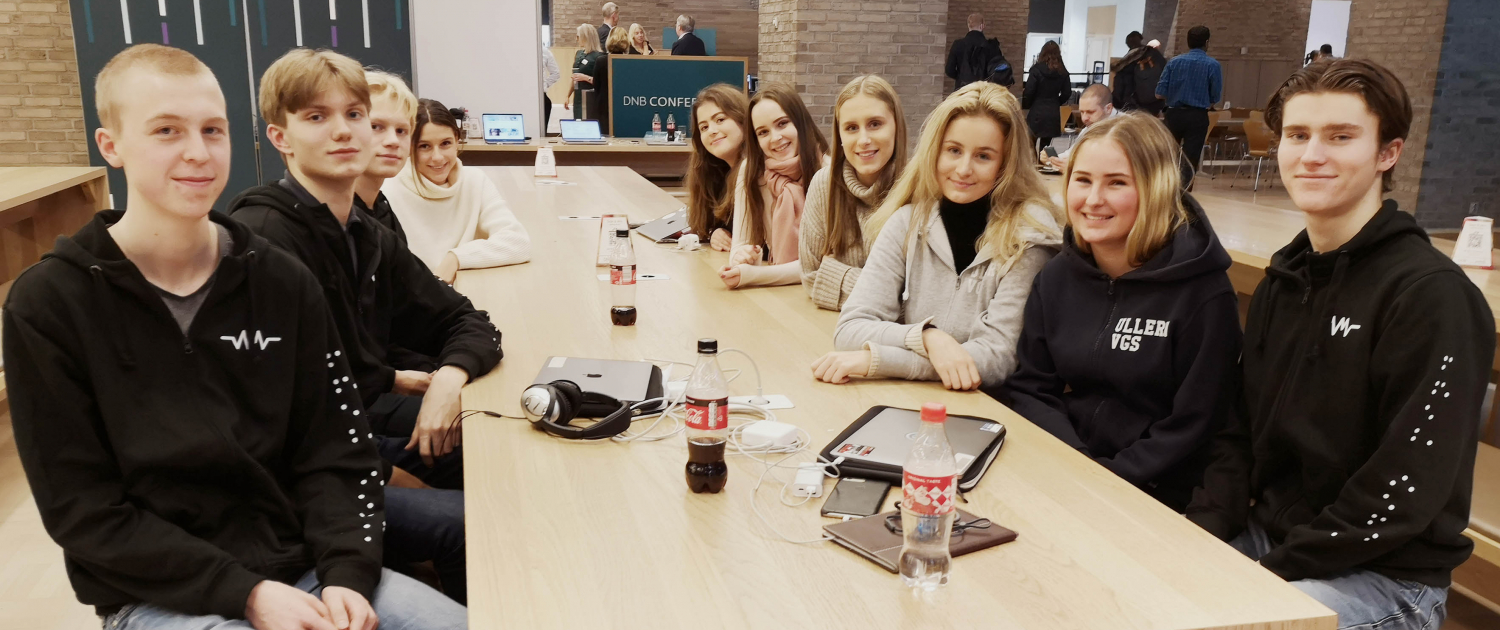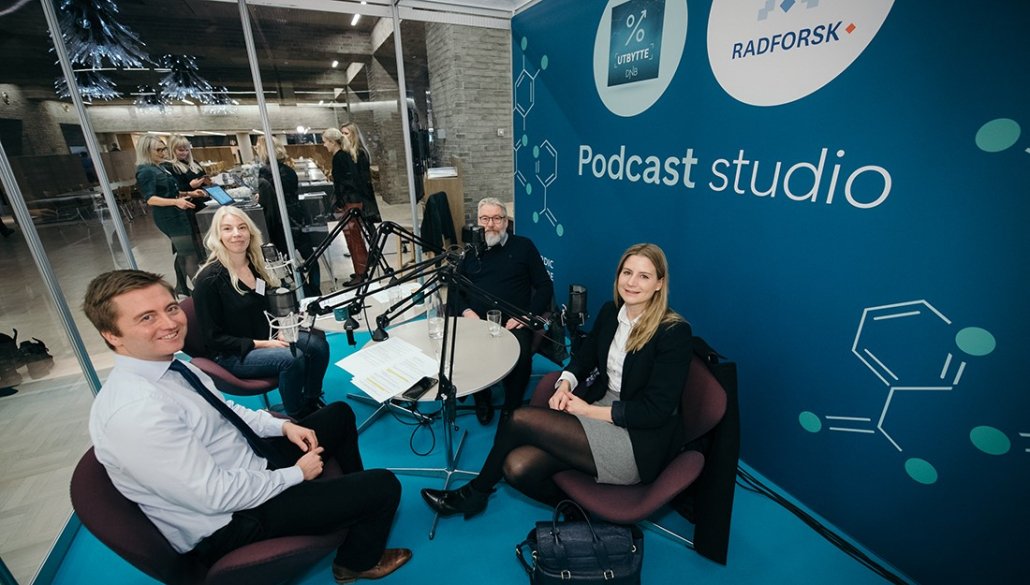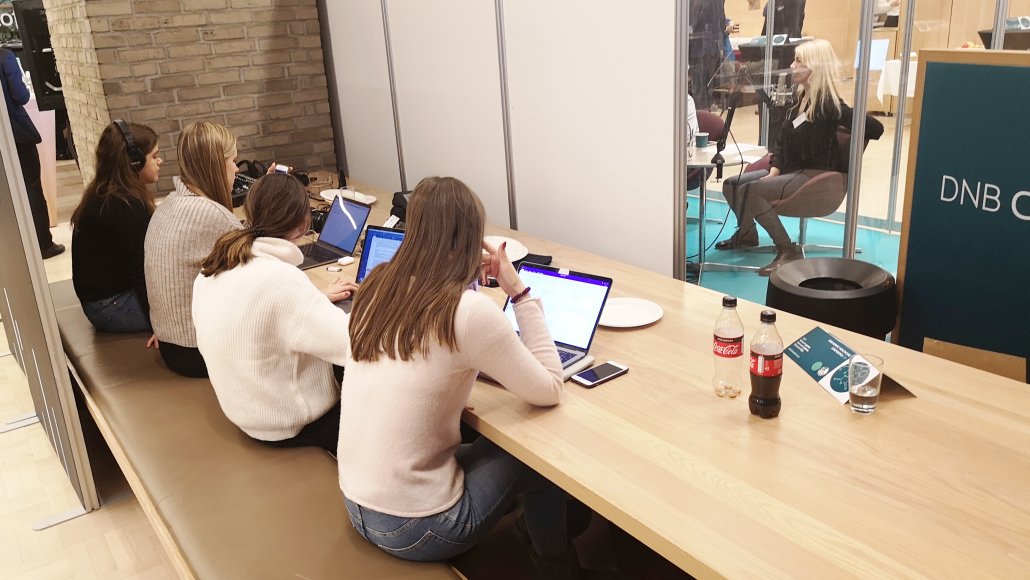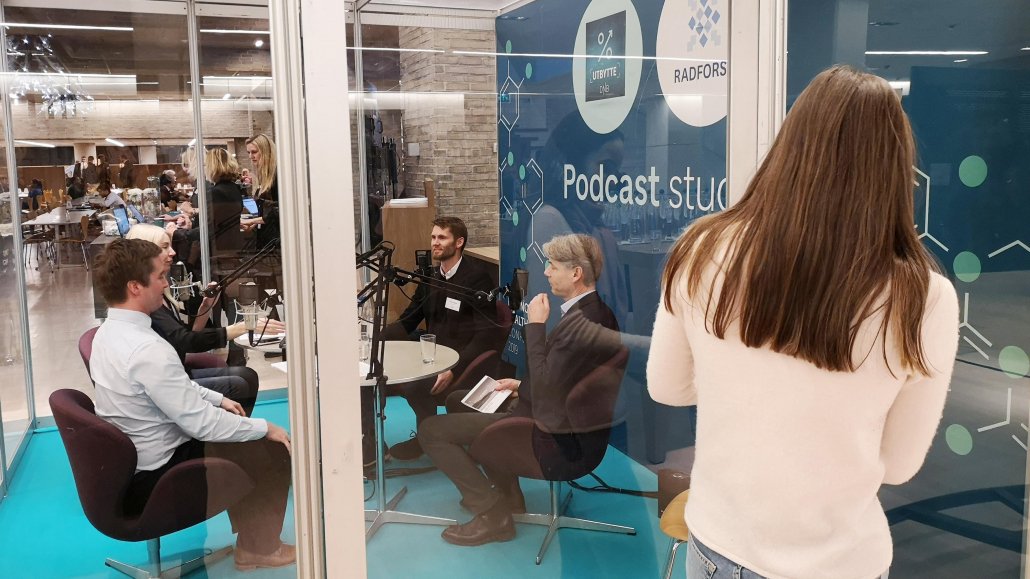From Ullern to Mars
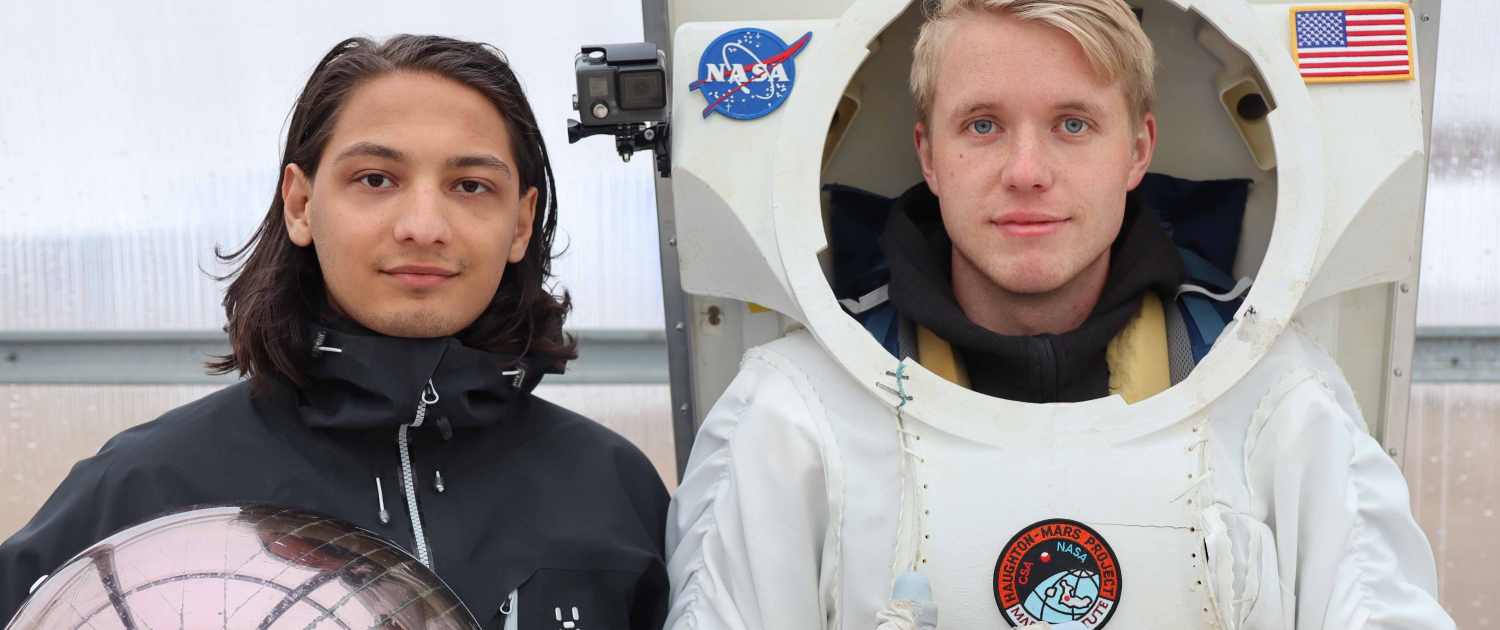
Read this article in Norwegian on our School Collaboration website.
A former Ullern student with an unusual career came to inspire current students in December.
Moina Medbøe Tamuly was in his final year at Ullern Upper Secondary School in 2014. Before Christmas in 2019, he came back to Ullern to tell today’s students about his exciting life after graduation.
Since Moina Medbøe Tamuly exited the school gates of Ullern Upper Secondary School for the very last time in June 2014, he has managed to spend two years in military service, worked in Trondheim, Oslo, Beijing, Shanghai, Amsterdam, Las Vegas, Brazil and the Arctic.
Moreover, he has an adventurous personality, combined with a passion for technology, which made him start the company NTENTION with his friend Magnus Arveng.
Magnus had the idea of a glove that could control drones, which he and Moina, together with their skilled team, has brought to life. The ground-breaking gloves can simplify the steering of everything from drones to VR interaction, music and robot arms. Their vision has been to develop a technology that is a natural and seamless extension of the human, instead of being an external instrument.
This has aroused the interest of the founder of the Mars Institute, Dr. Pascal Lee, who is collaborating with NASA on missions to the Moon and the exploration of Mars. The adventurous journey brought Moina all the way to Devon Island, a Mars-like, uninhabited island in the Arctic, together with his colleague Sondre Tagestad in NTENTION. During their stay, they tested if the glove could be used as an interactive instrument in conceptual space suits.
NTENTION’s collaboration partners at the Mars Institute/SETI Institute say in the article above that the glove “is revolutionary for future human exploration of the moon and Mars – and potential other planets”.
Right before Christmas 2019, Moina went back to his old upper secondary school, Ullern, to tell the students there today what life after graduation can be like.
Not a straightforward task
Moina tells the students the journey to Devon Island and the collaboration with astronauts has not been simple and straightforward, but has included many ups, downs and detours.
The students have brought their lunches into Kaare Norum auditorium to hear what the former Ullern student has to say about life after graduation.
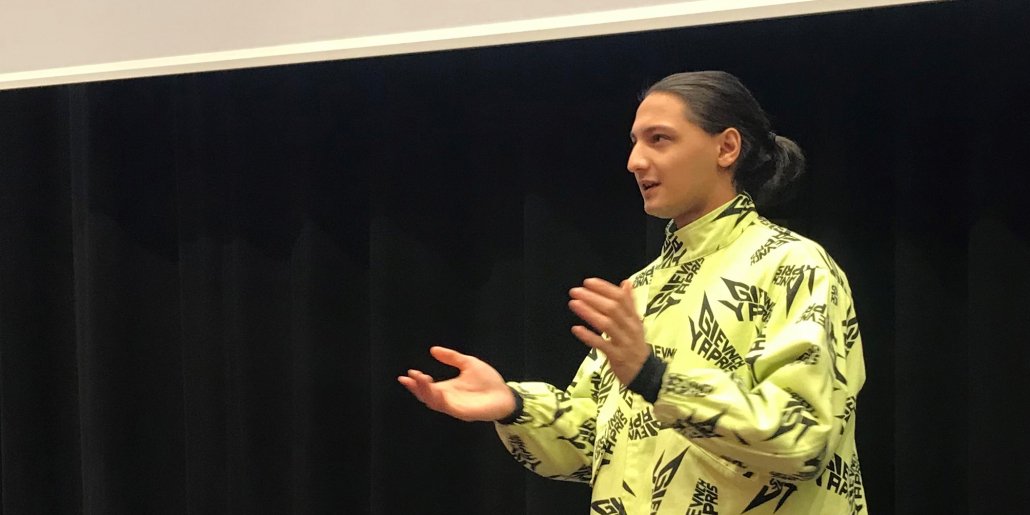
Moina Medbøe Tamuly is back on his old hunting grounds, telling Ullern students about life after graduation. Photo: Elisabeth Kirkeng Andersen
At Ullern, Moina studied physics, history, philosophy and chemistry.
“I wasn’t very good at physics. I thought it was a really demanding subject, but also very exciting,” Moina says.
“After I graduated, I was really sick and tired of school. Then I had to do military service, something I wasn’t exactly thrilled about in the beginning. I was immature and created some disorder, but eventually I started liking it so much that I stayed there for two years. I was even accepted to The Royal Norwegian Naval Academy, which would have been an adventurous opportunity that I still daydream about sometimes.”
After the military service, Moina studied Industrial Economy and Technology Leadership at NTNU. In the passionate and teeming student atmosphere at NTNU, Moina met his business partner and friend Magnus Arveng and their company NTENTION was born.
Moina says that when he was a student at Ullern, he liked the subjects, the other students, the teachers and working for the student council. The first period at NTNU was a shock after such an enjoyable period of upper secondary school and military service.
“When I moved to Trondheim to study at NTNU, everything became chaotic. I had a breakdown and became depressed. It was a big transition from the military service, where I had great co-workers and a lot of responsibility, to academic studies. Our company saved me. It was pure magic to come back to an environment where you cooperate closely with one another to reach results together – and to be able to see the results of what you do every day,” Moina says.
Moina believes this is a reality many students can recognise and that it is important to learn that things don’t always go the way you planned, no matter how hard you work.
The company the students started together now has 13 employees in different roles and functions.
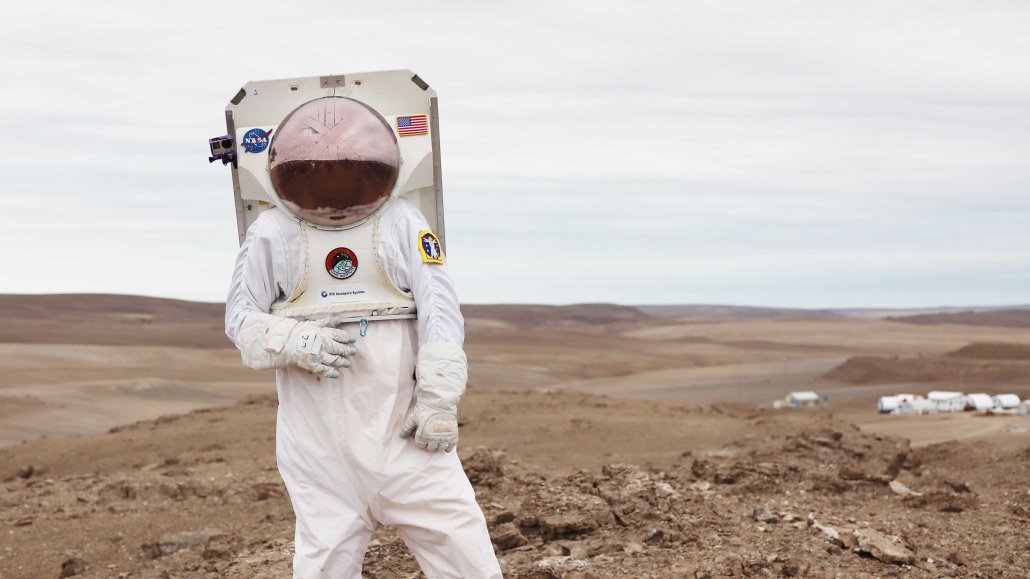
Dr. Pascal Lee, Head of the Research Station on Devon Island and space researcher at the Mars Institute, is trying out the glove from NTENTION. Photo: Haughton-Mars Project
The journey is as important as the goal
“I am not here to talk about what I have achieved, but about my life and the journey to get here,” Moina says to the Ullern students.
After showing the drone glove to interested students by using presentation slides and a video, Moina asks if there are any questions from the audience. Many hands go up in the air and they wonder how on Earth NTENTION got in touch with researchers that collaborate with NASA.
“It was very random. We met Dr. Pascal Lee at a conference arranged by Energy Valley. We knew the organisers and they gave us a stand for free. The glove we had developed can be used for music and art too. DJs can use it to play their set and combine it with video. So, together with the artist duo Broslo, we had arranged a unique stand with exciting artwork and video clips. That is where we started talking with Lee.”
A friendship developed between Lee, Moina and the others in NTENTION. Moina wants to highlight that you often meet friendly professionals if you dare to get in touch with them, one of the most important lessons from his journey so far.
“Our solution was a good fit with his visions and the need to explore Mars, so we began to work together,” Moina says.
The Ullern students’ lunch break is almost over, so Moina begins to sum up.
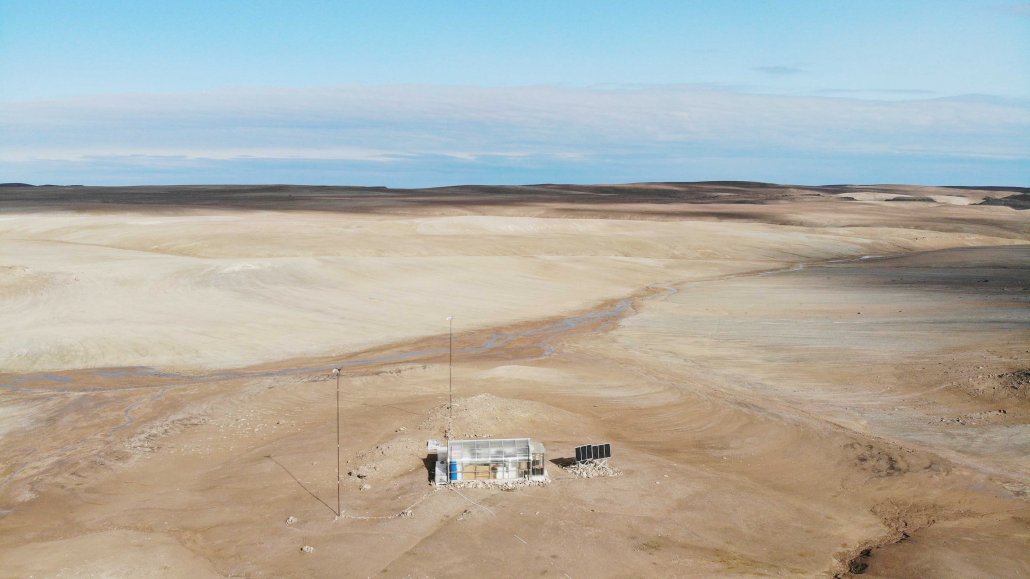
Devon Island is where NTENTION and Moina have tested the drone glove for the Mars Institute. Photo: Moina Medbøe Tamuly.
Time will be the judge of whether the drone glove Moina has developed one day will be a part of the space suits and equipment astronauts will use when landing on the Moon and Mars.
“The world will be more complicated and difficult when you graduate from Ullern, but all the more exciting. The last years of my life have been a little chaotic. It has been about closing deals and travelling around the world to find opportunities without a regular schedule. I finally learned that all people need to have a little bit of structure and to be part of a whole to thrive. In the end, I have unique experiences. My intellect has been nourished, I feel truly inspired and I am humbled to be a part of the journey where we are working to spearhead technological developments,” says Moina.


